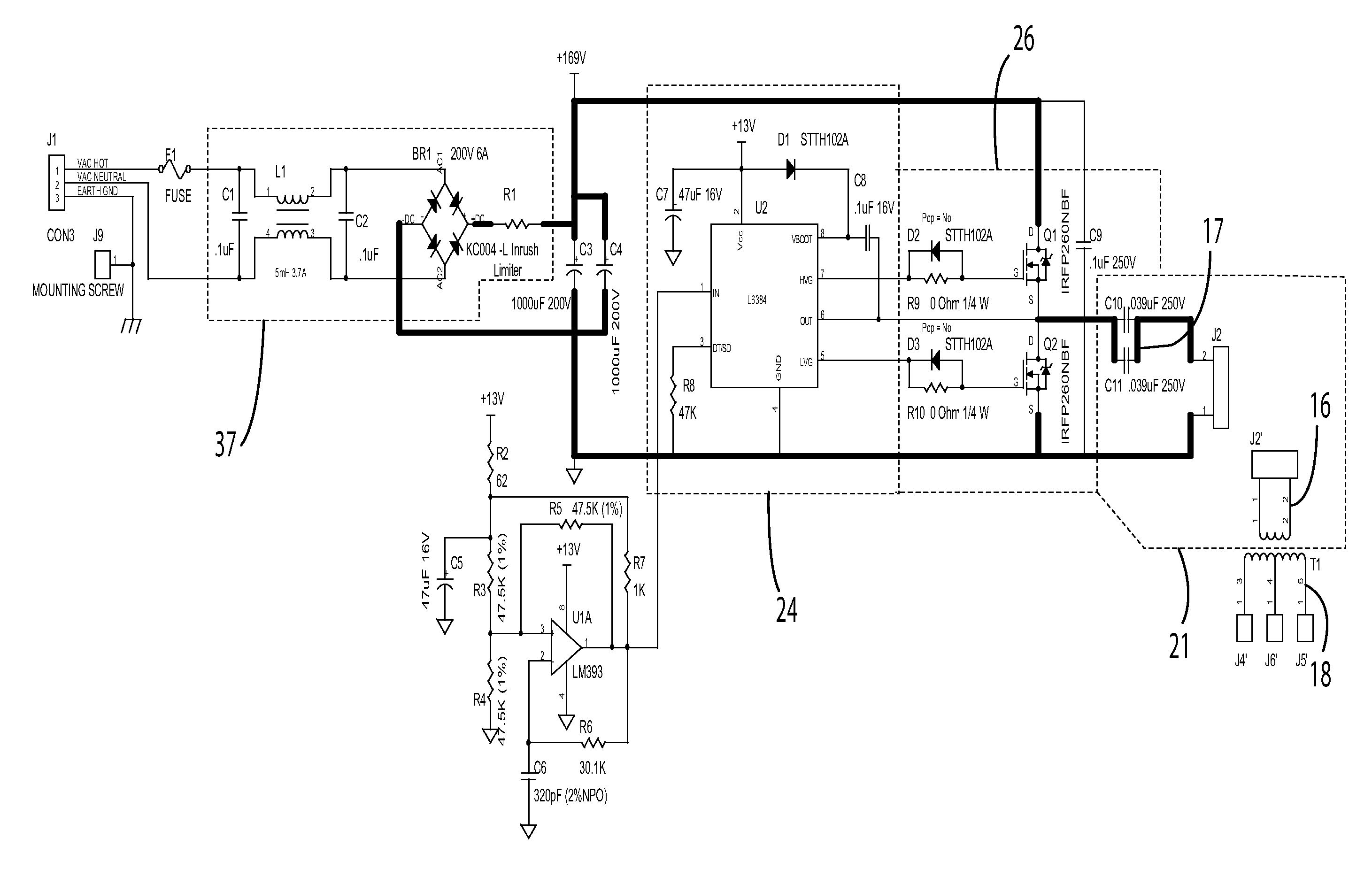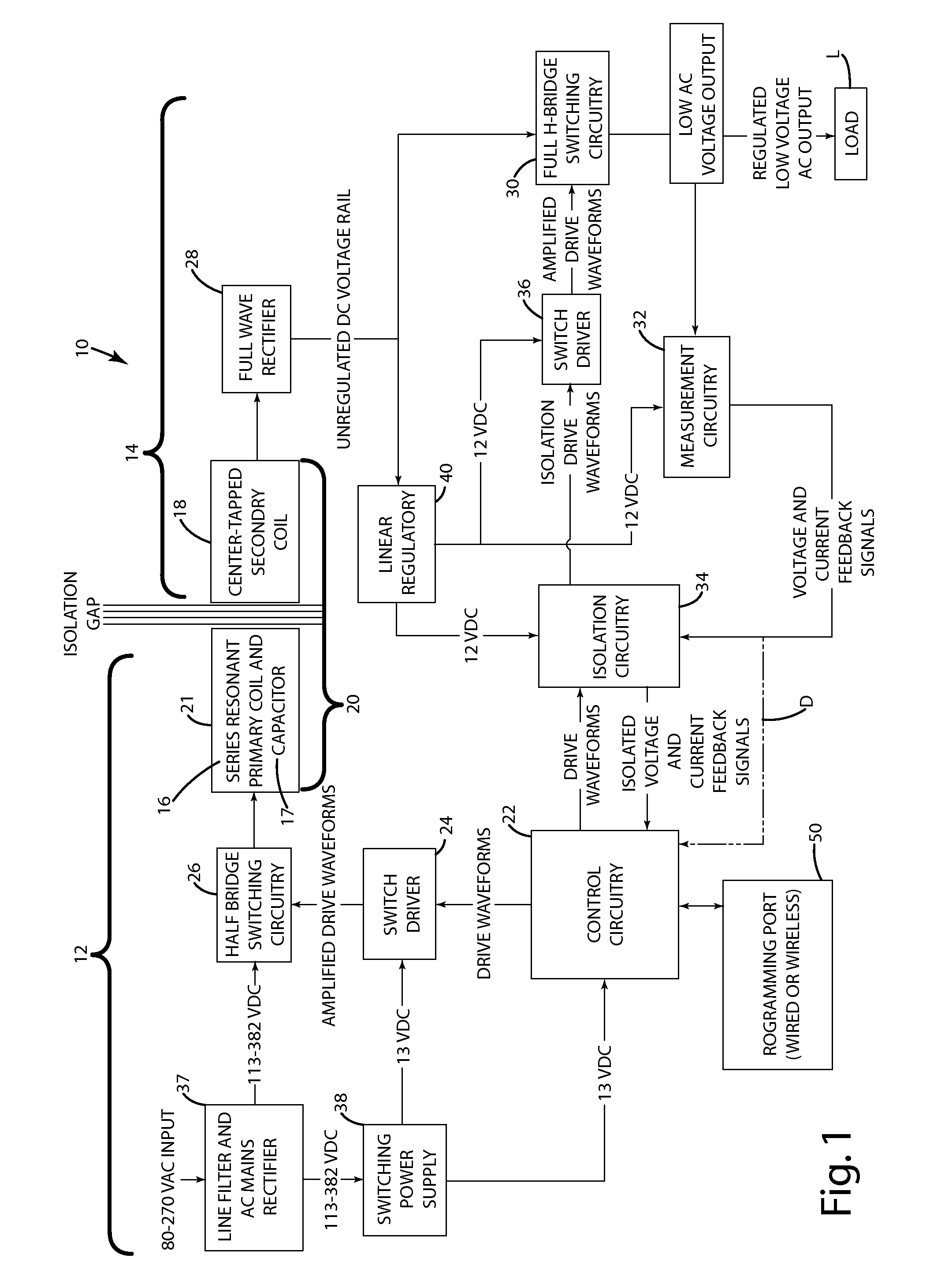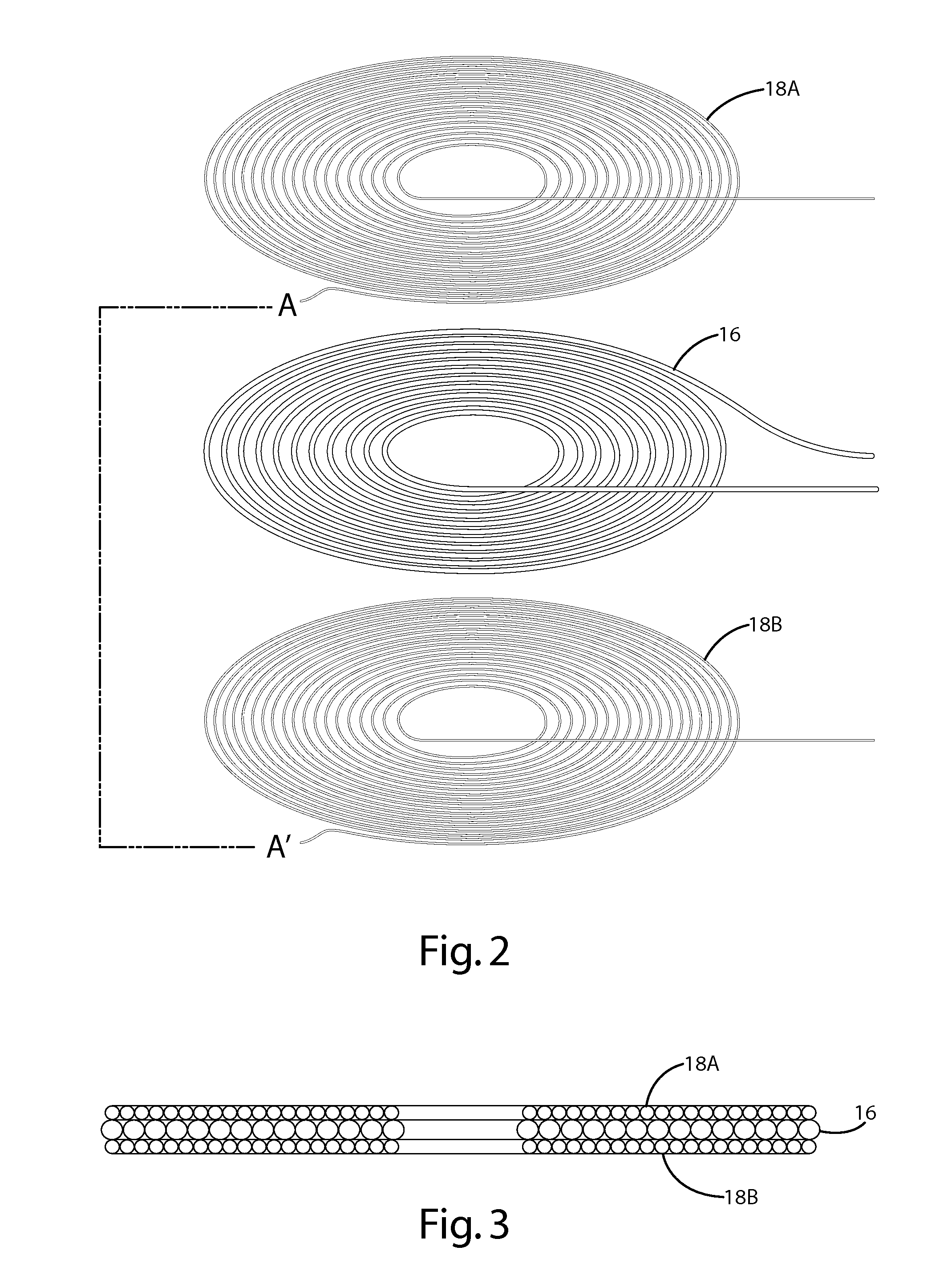Power supply
a power supply and power supply technology, applied in the direction of electric variable regulation, process and machine control, instruments, etc., can solve the problems of affecting the operation of the power supply, requiring substantial size and requisite weight of the core, and bulky transformers that are difficult to package, so as to reduce the startup stress of electronic devices, easy to detect and regulate, and quick adjustment and compensation
- Summary
- Abstract
- Description
- Claims
- Application Information
AI Technical Summary
Benefits of technology
Problems solved by technology
Method used
Image
Examples
Embodiment Construction
[0037]Referring now to FIG. 1, a diagram of a power supply 10 having an air core transformer 20 in accordance with an embodiment of the present invention is shown. The power supply 10 generally includes a primary-side circuit 12 and a secondary-side circuit 14. As perhaps best shown in FIG. 2, the primary-side circuit 12 includes a primary coil 16 and the secondary-side circuit 14 includes a secondary coil 18. The primary coil 16 and secondary coil 18 cooperate to form a transformer 20. The transformer 20 may be coreless. The primary-side circuit 12 also generally includes a controller 22, a switch driver 24 and switching circuitry 26. The control circuitry 22 controls operation of the switch driver 24, which in turn controls the application of power to the primary coil 16. The secondary-side circuit 14 generally includes a rectifier 28, switching circuitry 30, measurement circuitry 32, isolation circuitry 34 and a switch driver 36. The output of the secondary-side circuit 14 may be...
PUM
 Login to View More
Login to View More Abstract
Description
Claims
Application Information
 Login to View More
Login to View More - R&D
- Intellectual Property
- Life Sciences
- Materials
- Tech Scout
- Unparalleled Data Quality
- Higher Quality Content
- 60% Fewer Hallucinations
Browse by: Latest US Patents, China's latest patents, Technical Efficacy Thesaurus, Application Domain, Technology Topic, Popular Technical Reports.
© 2025 PatSnap. All rights reserved.Legal|Privacy policy|Modern Slavery Act Transparency Statement|Sitemap|About US| Contact US: help@patsnap.com



